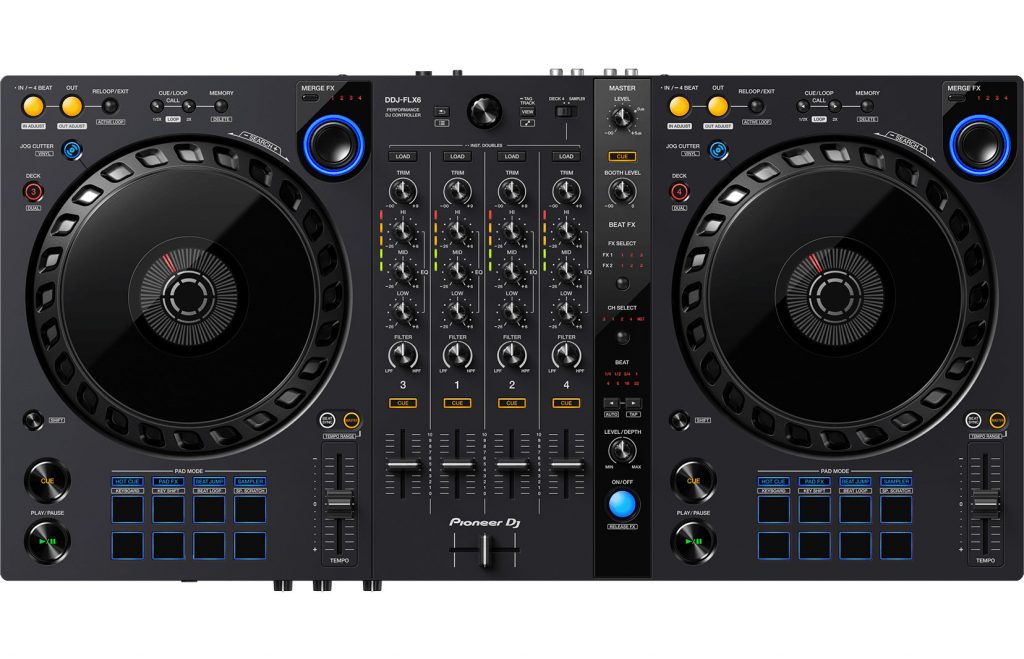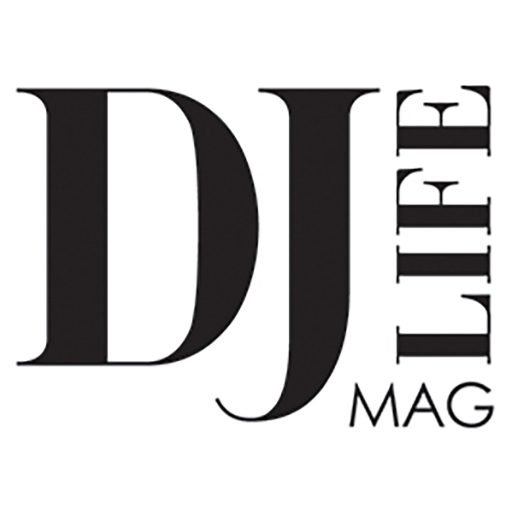It’s probably my own selectively myopic view of the DJ universe, but it seems as if so-called “all-in-one” or “standalone” DJ controllers — those that require no laptop, or computer-based software to perform with them — have been all the rage lately. Admittedly, that’s largely to do with what’s recently come across my review desk. But as much as I love a lot of the standalone offerings, there’s still very much a place for DJ controllers that are designed with a more traditional use-case in mind: Connecting them to a laptop and leveraging a conventional digital-music collection, including all the metadata that comes along for the ride, which many of us have been accumulating for years. That is, in fact, exactly where the Pioneer DJ DDJ-FLX6 comes into play, and this mid-tier DJ controller turns out to have a heck of a lot going for it.
What You’d Expect: The DDJ-FLX6 unlocks the full functionality of Serato DJ Pro, and Core functions of Pioneer DJ’s own rekordbox, like Performance. (Users must still pay for rekordbox’s Creative mode). It provides support for four audio channels, with the mixer section in the middle offering direct control of all four, while the transport sections are selectable for either of their two respective channels.
Everything you’d expect is present and accounted for, and perhaps more: 3-band EQ, pass filters, track navigation features for mouse-free selection, effects, and, of course, the now-ubiquitous eight performance pads per side. Like nearly every DJ controller, the pads are multi-function; on the DDJ-FLX6 they can be used for managing cue points within tracks, initiating loops, jumping beats, triggering samples, and more. The exact behavior of the pads varies depending on whether the unit is being used with Serato or rekordbox.

A strip of controls between the mixer section and the right transport controls provides access to the DDJ-FLX6’s effects, and that, too, varies a bit between the two supported DJ platforms, but it provides the usual sorts of things you’d expect.
Pioneer DJ has put some really lovely platters on the DDJ-FLX6. The same size as Pioneer DJ’s CDJ-3000s, they feel, as the company claims, natural. They also have an LED playhead position display in the center, which is a nice-to-have, for sure.
But while the platters are beautifully solid in feel, the faders on this controller have a fairly considerable amount of side-to-side “play” that starts to suggest component quality tradeoffs. The knobs for things like EQ also seem to wobble a bit more than I might like to see.
I could overlook all that pretty easily, but what is truly noticeable about the DDJ-FLX6 can be seen on the back panel. There, you’ll find only RCA outputs — not just for the booth, where I’d expect them, but the master as well. To be honest, if that’s a move intended to save on manufacturing costs, it’s not what I would have picked to save a buck; either balanced quarters or XLR (in addition to the RCAs) would seem to me to make a lot more sense for the market Pioneer DJ is going after at this unit’s price point.
What You Might Not Expect: But nitpicking aside, the DDJ-FLX6 is still a pretty fun controller and, as Pioneer DJ’s promotional materials lead with, one of the unit’s leading features centers around its Merge FX feature. While you can do the usual BPM-alignment/beat-match/EQ/fade-style of blending tracks, Merge FX lets you just blow the whole set right out of its predictable waters (and make you look like a master of all things DJ in the process) by jumping genres or jumping wide-tempo gaps with ease. Want to jump from EDM (or anything else) to country, rock, pop, hip-hop or anything else you feel needs to keep your audience electrified? No worries; the Merge FX knob’s got you covered with multiple effects to choose from. When engaged, you get a beautiful build — “dramatic” Pioneer DJ calls them (and they are) — that takes you out of the currently playing track. When you’re ready, push a button, you get an awesome drop, then just start the next track as the effect plays out. Simple, easy, and massively effective, especially for mobile DJs spanning genres while trying to maintain an energetic vibe.
The nice thing about Merge FX is that it works in both rekordbox and Serato DJ, although it’s understandably more limited with Serato DJ. With rekordbox (since it’s Pioneer DJ’s own software), the Merge FX can be extensively customized, and you can choose from eight patterns; under Serato, it’s limited to four. Either way, it was incredible fun to play with.
Under Serato DJ, Merge FX is powered by Serato’s FX Pack, and Pioneer DJ include a license code to enable the pack to be downloaded and activated. Worth noting: The company also includes a license key for Serato’s Pitch ‘n Time expansion pack, providing expanded time-stretching and key-shifting support.
Serato Keeps Maturing: While this review is about the Pioneer DJ DDJ-FLX6, I’d be remiss by not mentioning just how strong a platform that Serato DJ has become in recent years. To be sure, Serato’s been around for a very long time indeed, but it seems that lately, barely a week can go by without me receiving a press release touting a new Serato DJ integration. And it’s not just Pioneer DJ, but virtually every brand in the DJ space.
The software itself seems to keep getting better and better as well. Between the exceptionally wide hardware support and its rock-solid reliability, it seems a particularly wise choice at the moment. And given that Serato has gotten on the streaming bandwagon (with support for Beatsource Link, Beatport Link, SoundCloud, and Tidal), it seems like an even more salient choice, not just for club jocks, but mobile guys as well, given the Tidal support, specifically. As I’ve noted in previous reviews for these pages, Tidal is sort of a dream come true for handling the myriad requests that characterize the typical wedding gig these days.
Conclusions: The Pioneer DJ DDJ-FLX6 is available at a pretty appealing price point: $599 on the street. Given its full slate of capabilities, including unlocking full functionality of both Serato DJ and rekordbox, it starts to seem like a bit of a bargain, actually — not to mention being a particularly interesting choice for mobile DJs. It’s capable, fun and easy-to-use, and feature-complete. All you need is your laptop and a music collection (and/or a Wi-Fi connection for Serato’s streaming) to throw down an impressive set with ease.
To check out more tech reviews, click here.


